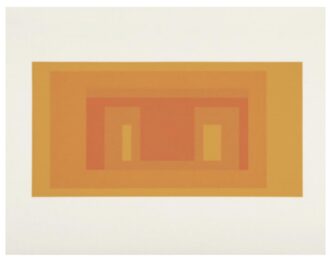

1888-1976
"In order to use colour effectively it is necessary to recognise that colour deceives continually."
Josef Albers, a German-born American artist, is widely known for his influential work as a painter, educator, and colour theorist. While he is primarily recognised for his groundbreaking series “Homage to the Square,” Albers also explored printmaking techniques.
Albers worked with various printmaking techniques, including lithography, screen printing (serigraphy), and etching. He was particularly drawn to the graphic possibilities that printmaking offered.
Similar to his approach in painting, Albers often explored serial and repetitive compositions in his printmaking. He would create multiple versions of a single image, experimenting with variations in colour, texture, and arrangement.
Albers’ printmaking works allowed him to delve into colour relationships and optical effects. He utilised printmaking techniques to experiment with different colour combinations and their effects on perception, often achieving remarkable vibrancy and depth in his prints.
Albers was known for his interest in texture and surface qualities. In his printmaking, he explored various ways to create textural effects, such as incorporating embossing or de-bossing techniques into the prints, resulting in tactile and visually engaging surfaces.
Albers’ fascination with geometric forms and spatial relationships was evident in his printmaking. He often employed geometric shapes, such as squares, rectangles, and grids, to explore the interaction of colours and the optical illusions they create.
Read the Blogs: